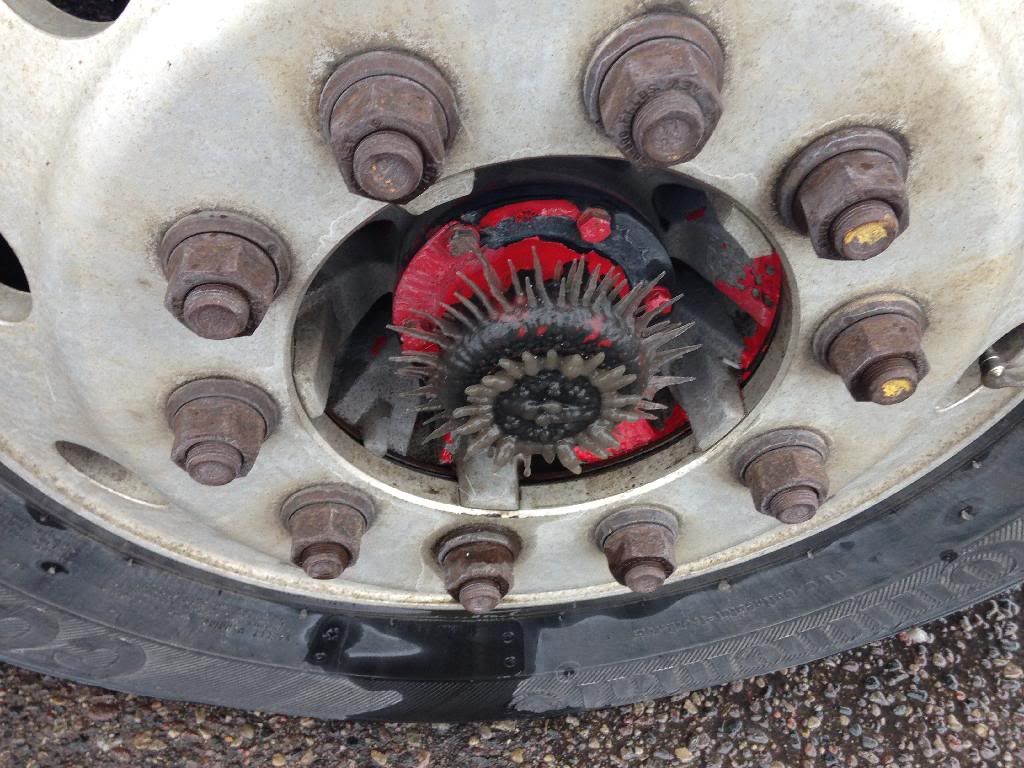Passing Question On CDL Exam
Topic 3195 | Page 1

No, you should only tap the horn or flash the lights when needed to get their attention. An example I would use, when I was driving an ambulance or firetruck, we had very loud air horns. If you waited until you got right behind someone and pressed the horn, they almost always slammed the brakes because it scares them. We would always use the air horn as we approached something from a distance.
My understanding of the horn and light flashing is you should only use them to avoid a crash. I am not sure that light flashing is ever a good idea because you may blind someone.
With all this said, I am a rookie. I am drawing off of experience from other careers. I am curious to see what the more experienced and expert drivers on here have to say.

No, you should only tap the horn or flash the lights when needed to get their attention. An example I would use, when I was driving an ambulance or firetruck, we had very loud air horns. If you waited until you got right behind someone and pressed the horn, they almost always slammed the brakes because it scares them. We would always use the air horn as we approached something from a distance.
My understanding of the horn and light flashing is you should only use them to avoid a crash. I am not sure that light flashing is ever a good idea because you may blind someone.
With all this said, I am a rookie. I am drawing off of experience from other careers. I am curious to see what the more experienced and expert drivers on here have to say.
Interestingly enough, I also recalled from driver's ed (way back over 20 years ago) that you should never use your high beams to signal another driver because it could distract and/or blind them temporarily. This was in context of an oncoming vehicle, and usually to signal them to turn down their own high beams.
Common sense would dictate that you don't have to honk or flash your beams every time you attempt to pass another vehicle, but I'm trying to understand this material. I find it hard to believe you'd have to use either of these options EVERY time you intend to pass, but again, I'm just trying to learn the material.
Your first statement, that one should only use these measures when you need to get another driver's attention, makes sense. But the text states:
"When you are about to pass a vehicle, pedestrian or bicyclist, assume they do not see you."

For further clarification, I also understand that one should use their horn sparingly, as the same section later goes on to mention. For the obvious reason that a horn, more often than not, can actually startle another driver and become a dangerous distraction in itself.
Indeed the common sense approach is what they're referring to....get their attention if need be with the horn or lights.
Always assuming people don't see you is just a normal defensive driving technique. This is especially useful when riding a bicycle or motorcycle where a lot of times people really don't see you.

Indeed the common sense approach is what they're referring to....get their attention if need be with the horn or lights.
Always assuming people don't see you is just a normal defensive driving technique. This is especially useful when riding a bicycle or motorcycle where a lot of times people really don't see you.
That's what I thought. I remember you mentioning you ride in an earlier post Brett. I've rode for years myself, and it wasn't till I started riding a bike that I became even more aware of my surroundings - always assuming other motorists don't see me. That's survival for a motorcyclist! FYI I had a Yamaha Road Star (1999, first year they came out) that was so tricked-out I had Harley dudes saying "nice Fatboy!" My straight Vance & Hines pipes w/o baffles also did the trick. I set of car alarms in small towns when I rode by.
So, the text in question is referring to what you should do when you believe somebody isn't aware of their own surroundings, specifically that you are intending to pass them. It's not what you should do EVERY time you pass. Good defensive driving never assumes, but when you're pretty sure they're not aware of you, flash your highs or tap the horn.
Baffle:
A partition or separator within a liquid tank, used to inhibit the flow of fluids within the tank. During acceleration, turning, and braking, a large liquid-filled tank may produce unexpected forces on the vehicle due to the inertia of liquids.New Reply:
New! Check out our help videos for a better understanding of our forum features

















Preview:
This topic has the following tags:
Safe Driving Tips







 TT On Facebook
TT On Facebook
I want to make sure I'm really understanding what is being said here, from the High Road Training material.
"Passing - When you are about to pass a vehicle, pedestrian or bicyclist, assume they do not see you. They could suddenly move in front of you. When it is legal, tap the horn lightly or, at night, flash your lights from low to highbeams and back. And drive carefully enough to avoid a crash even if they do not see or hear you."
Does this really mean that the DOT wants truck drivers to either tap the horn or flash their high beams EVERY TIME they intend to pass another vehicle on the road? If that's the case, I don't recall ever seeing a truck driver on the road doing this. Of course that doesn't mean that they shouldn't, if that's what this is saying.
DOT:
Department Of Transportation
A department of the federal executive branch responsible for the national highways and for railroad and airline safety. It also manages Amtrak, the national railroad system, and the Coast Guard.
State and Federal DOT Officers are responsible for commercial vehicle enforcement. "The truck police" you could call them.